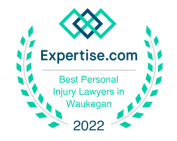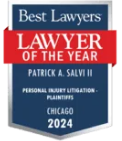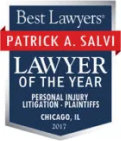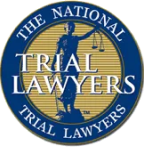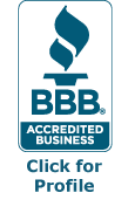Spinal Cord Birth Injury
Spinal cord injuries are one of the rarest kinds of birth injuries, with incident rates estimated to range between one case per 29,000 births and one case per 8,000 births. Nevertheless, if your child suffered a spinal cord injury during birth, you understand how devastating its effects may be. Your child could need a lifetime of medical care and assistive services to cope with the physical, emotional, and financial consequences of their injury. This care can be expensive, but you could be entitled to substantial compensation from the medical provider responsible for your child’s spinal cord birth injury.
At Salvi, Schostok & Pritchard P.C., we want to help you pursue this compensation. Over the course of the last four decades, we have recovered more than $2.5 billion in compensation for our clients. Our legal team has the skill and experience to pursue the financial resources your child needs to get the care and opportunities they deserve.
If your child suffered a spinal cord injury at birth due to the negligence of their healthcare providers, your family deserves accountability and justice. Let Salvi, Schostok & Pritchard P.C. help you demand it. Contact us today for a free initial case evaluation with a Chicago birth injury lawyer.
How Can the Spinal Cord of a Baby Be Injured During Birth?
The trauma of delivery can injure a baby’s spinal cord, particularly in combination with medical complications like:
- Improper use of forceps or vacuum extractors, especially if doctors twist or pull on the baby’s head or body as they pull the baby through the birth canal
- Rotating the baby into the optimal position for vaginal delivery
- Breech birth, or a situation where an infant is born feet or bottom first, which may cause the head, neck, or back to get stuck in the birth canal
- Shoulder dystocia, a condition where a baby’s shoulders get stuck in the mother’s pelvis
A spinal cord birth injury may also result from conditions that occur during pregnancy. For example, fetuses can develop defects such as spina bifida, a condition where the neural tube does not close or develop properly, which may result in the spinal cord protruding through the spinal column. Babies who suffer from spina bifida are more likely to sustain a spinal cord injury during the delivery process.
Classifications of Spinal Cord Injuries
Spinal cord injuries fall into one of these categories:
- Incomplete – In an incomplete spinal cord injury, the spinal cord has not been fully severed and can still transmit some signals below the level of injury. As a result, victims of incomplete spinal cord injuries may retain some sensation and motor function in the affected areas of the body.
- Complete – In a complete spinal cord injury, the spinal cord is fully severed or compressed, which results in the loss of all sensation and function below the site of the injury.
Spinal cord injuries may also be categorized by the area on the spine where the injury occurred. Lumbar spinal cord injuries may only affect the legs and pelvis, while thoracic spinal cord injuries can also affect the abdomen and chest. Cervical spinal cord injuries (injuries to the neck) affect everything from the neck and shoulders down. In some cases, they can become fatal.
Risk Factors for Spinal Cord Birth Injuries
Some of the risk factors that may lead to a spinal cord birth injury include:
- Abnormal fetal presentation, such as breech birth
- Cephalopelvic disproportion, in which a baby’s head is too large or the mother’s pelvis is too small to facilitate a vaginal birth
- Prolonged delivery
- Macrosomia, in which a baby is much larger than average
- Premature birth
- Low birth weight
- Oligohydramnios, or low amniotic fluid levels
- Maternal health conditions, such as infections or preeclampsia
Infant Spinal Cord Injury Signs and Symptoms
The signs of a spinal cord birth injury are often immediately apparent, although in some cases, symptoms only manifest in the first week following birth. Some of the signs and symptoms of a spinal cord injury in a newborn include:
- Seizures/spasming
- Low oxygen levels
- Low heart rate
- Difficulty feeding
- Indifference to touch
- Curled feet and hands
- Weak/stiff limbs
Many of these signs and symptoms, especially muscle weakness, stiffness of limbs, or spasming, can also indicate other kinds of ailments, such as cerebral palsy, so doctors will conduct tests to confirm the diagnosis. This may include performing X-rays, CT scans, and MRIs.
How an Experienced Chicago Birth Injury Lawyer Can Help
If your child suffered a spinal cord injury at birth due to medical malpractice, the legal team at Salvi, Schostok & Pritchard P.C. is ready to get to work on your family’s behalf, demanding full compensation and accountability for the harm your child has suffered. Our childbirth injury lawyers can help you by:
- Thoroughly investigating the facts and circumstances of your child’s birth and giving you an honest assessment of your case
- Identifying the parties who can be held liable to compensate your family and available sources of financial recovery, such as malpractice insurance coverage
- Securing all available evidence, including medical records, test results, diagnostic scans, doctor’s notes, and witness statements
- Collaborating with highly respected medical experts who can provide effective, persuasive expert witness testimony in support of your case
- Documenting the expenses and losses that your family incurs due to your child’s injury, including medical treatment, rehab and therapy, purchases of medical and mobility equipment, and home health or special education services
- Vigorously pursuing maximum financial compensation for you through a negotiated settlement or by taking your case to court, if necessary
Contact a Birth Injury Lawyer Today
If you suspect your child suffered a spinal injury at birth, do not delay speaking to an experienced attorney about your case. Contact Salvi, Schostok & Pritchard P.C. today for a free, no-obligation consultation and learn more about how our firm can help you get the justice, accountability, and compensation you deserve for the harm your child suffered.
